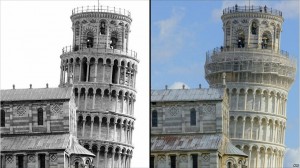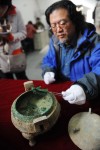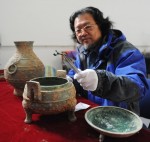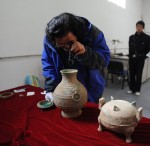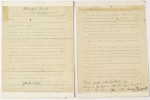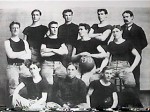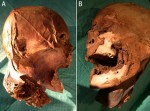 A mummified head that’s been floating through private collections for a few hundred years has been identified as the head of King Henry IV of France.
A mummified head that’s been floating through private collections for a few hundred years has been identified as the head of King Henry IV of France.
Henry, the Protestant king of Navarre who converted to Catholicism so he could claim his throne after the assassination of Henry III by a monk, was himself assassinated in 1610 by François Ravaillac, a Catholic fanatic/nutjob who had seen in a vision that Henry’s preparation for war with Spain was really a war against the Pope.
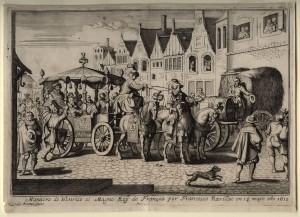 In 1793 after the execution of King Louis XVI, French revolutionaries desecrated the royal tombs in the Basilica of Saint-Denis, decapitating them and dumping the bodies in mass graves. It was a symbolic extension of the guillotine going back through time to sever the connection between France and its monarchs, even the once-beloved ones like Henry IV, who had ended 30 years of religious civil war by reinstating the civil rights of Protestants and general freedom of conscience in the Edict of Nantes in 1598.
In 1793 after the execution of King Louis XVI, French revolutionaries desecrated the royal tombs in the Basilica of Saint-Denis, decapitating them and dumping the bodies in mass graves. It was a symbolic extension of the guillotine going back through time to sever the connection between France and its monarchs, even the once-beloved ones like Henry IV, who had ended 30 years of religious civil war by reinstating the civil rights of Protestants and general freedom of conscience in the Edict of Nantes in 1598.
After the revolutionary upheaval, the head disappeared only to turn up at an auction in 1919 where an antiques dealer bought it for three francs. It’s been in private collections since then and was widely reputed to be the head of King Henry, but until now there was no proof, only rumor.
Led by Philippe Charlier, a forensic medical examiner at Poincaré University Hospital in Garches, France, a 19-person multidisciplinary team composed of forensic anthropologists, archaeologists, geneticists and even perfumers examined the head, using a variety of techniques to determine its identity. Unfortunately they were not able to compare its DNA to living descendants of the first Bourbon king because they couldn’t extract any uncontaminated mitochondrial DNA from the mummified head, but the physical evidence is extensive and so overwhelmingly points to Henry that we can say the head has been positively identified.
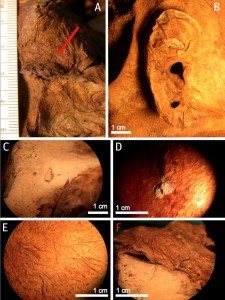 The head displays a variety of distinguishing characteristics matching extant portraits and the medical history of the king. There’s an unevenly shaped mole above the right nostril and a pierced right ear. The piercing is quite large and the lobe has a patina developed from years of earring use, a fashion adopted by many men in the Valois court.
The head displays a variety of distinguishing characteristics matching extant portraits and the medical history of the king. There’s an unevenly shaped mole above the right nostril and a pierced right ear. The piercing is quite large and the lobe has a patina developed from years of earring use, a fashion adopted by many men in the Valois court.
There’s a lesion in the upper left maxilla (aka the mustache bone or the top of the jaw) corresponding to a stab wound inflicted by would-be regicide Jean Châtel in 1594. There are red and white hairs on the head and face, but none on the pate. Henry had ginger tresses and goatee but was bald on the top of his head. He had horrible teeth according to contemporary witnesses, and so does the mummified head.
Radiocarbon dating returned a date range of between 1450 and 1650; Henry was assassinated in 1610. Gray deposits on the head matched three different moulds of the head, one done right after the king’s death before embalming, one on the mummified head in 1793 right after it was so rudely separated from its body, and the last done in the early 20th century by one of its owners. The head also mutely testifies to its removal from the body. Three postmortem cutting wounds at the base of the neck indicate deliberate decapitation.
 Overlays of the skull and sculptures of the king done near the end of his life match perfectly, as does a facial reconstruction. Also, the embalming method matched the very specific technique used at Henry’s request.
Overlays of the skull and sculptures of the king done near the end of his life match perfectly, as does a facial reconstruction. Also, the embalming method matched the very specific technique used at Henry’s request.
The autopsy report of King Henri IV, published in the complete works of the surgeon Guillemeau (1549-1613), showed that the brain was not examined. Such an examination was not systematically performed when the cause of death was known (which for Henri IV was two knife wounds made in the thorax by Ravaillac). Another practitioner, Pigray (1532-1613), was in charge of the embalming process, and he took into account the king’s wish to be embalmed “in the style of the Italians.” This form of embalming minimises the mutilating aspect of the embalming procedure by not opening the skull—the brain and all internal structures remain in the skull (no vault sawing, no evacuating trepanation, no ethmoidal perforation). Computed tomography of the head confirmed that no sign of skull base or vault trauma (except for the old maxilla lesion), sawing, or opening of the cerebral cavity was present.
A circumferential band of black pigment was seen on the skin at the base of the neck. Using Raman spectroscopy, it was identified as ivory black, a variety of amorphous carbon. This charcoal, obtained by anaerobic calcination of animal bones, corresponds to that deposited by the surgeon Pigray on the surface of the cadaver to absorb decomposition fluids and putrefactive gases; the precise upper limit of the cervical deposit may be explained by the head being protected by strips of cloth so that it was not blackened during the process.
Now that the head has been conclusively identified, it will be reburied at Saint-Denis in a ceremony next year. I wish I could be there. I’m sure it will be lovely and moving and Henry IV was totally my favorite king.


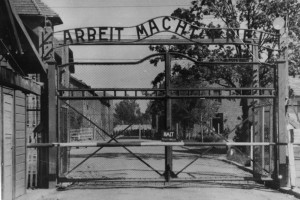 Almost 2 years after the International Auschwitz Council started the Auschwitz-Birkenau Foundation to raise the $120 million needed to fund a major renovation of the crumbling structures at Auschwitz, Germany has pledged to donate $80 million to the foundation over the next year. That’s fully half the $160 million dollar goal, an endowment that would support not only the emergency restoration work but would also generate enough yearly interest to provide steady maintenance funds.
Almost 2 years after the International Auschwitz Council started the Auschwitz-Birkenau Foundation to raise the $120 million needed to fund a major renovation of the crumbling structures at Auschwitz, Germany has pledged to donate $80 million to the foundation over the next year. That’s fully half the $160 million dollar goal, an endowment that would support not only the emergency restoration work but would also generate enough yearly interest to provide steady maintenance funds.





